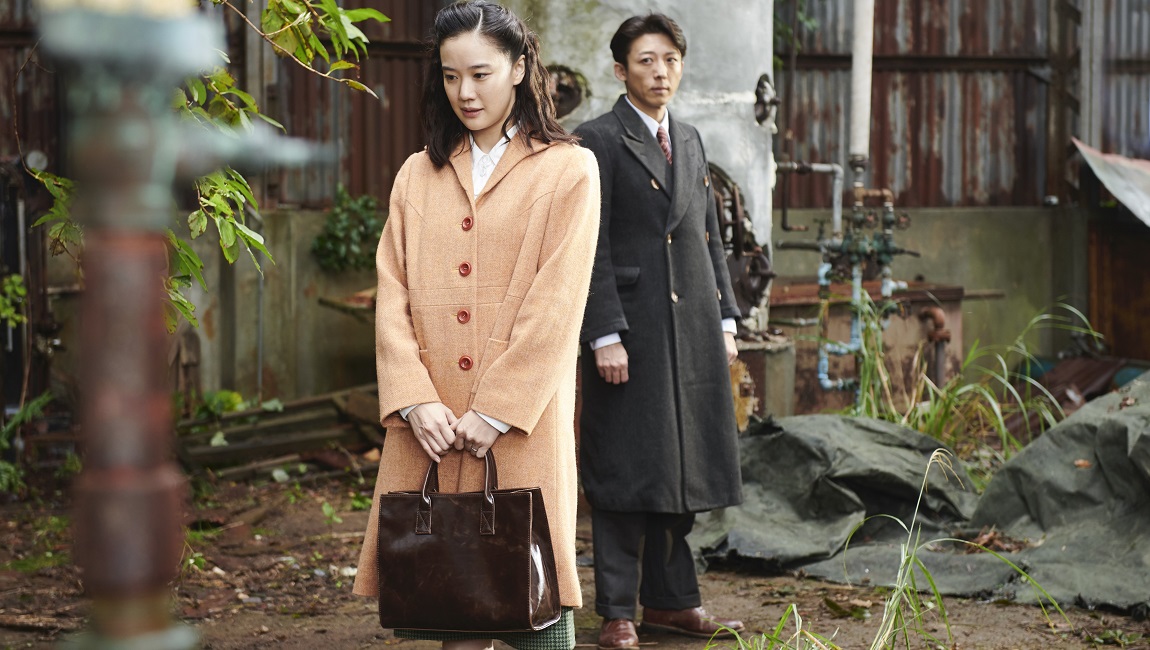Super Hero is an impressive step forward in animation for the franchise, even as its constant winking can sometimes come off as an insecure plea for validation from DBS‘s rabid fanbase.
Though it’s always existed in specialty markets, serialized anime hit mainstream North American consciousness with Cartoon Network’s Toonami. A CGI robot named T.O.M. MC’d a block of after-school programming with his signature Gen-X who-cares swagger, and the experimental programming was immediately successful for their 9-to-15-year-old demographic. Ted Turner’s company took a gamble with these violent (but censored) foreign cartoons that had gained exponential popularity in Japan since their asset bubble in 1986; but, it seems that giving boys violence and flashing lights in half-hour doses is a safe bet no matter what country it comes from. The quintessential lights-and-violence product was Dragon Ball, a show about alien monkeys who can blow up planets with energy beams that come out of their hands (or mouth, or eyes) if they yell enough. It was by far the most popular show on this block, its characters nearly synonymous with the word “anime” in the American mind and second in popularity only to the merchandising miracle of Pokémon.
Dragon Ball began as a fun, light sci-fi send-up of the classic Chinese novel Journey to the West (hence the alien monkeys) and the weirder Shaw Brothers wuxia films — mostly the ones where martial artists can channel their energy (ki) outside their body and fire this energy at their opponents. It also featured something new for male-marketed (shonen) action anime: a silly young boy rather than a self-serious bodybuilder as the protagonist. Then, from what one can only assume came from marketing department meetings at the Weekly Shonen Jump manga house, Dragon Ball was rebooted as Dragonball Z, a comic with none of the Journey to the West elements, a whole hell of a lot more ki beams, and a wonderful compromise of a muscleman protagonist with the brain of a boy. I was the target audience for the anime in the late ’90s; my devotion to it was like unto religion.
Like many millennial ex-weeaboos, my interest in Dragon Ball moved to the periphery, into a realm of nostalgic admiration rather than love. I’ve shared the memes of Goku and Vegeta decked out in Supreme jackets and sipping lean to group chats. I’ve watched more than a few episodes of the latest iteration (Dragon Ball Super), and I’ve watched Dragon Ball Super: Broly in a packed theater. I’m not in the fandom, but I’m willing to give Toei Animation my money from time to time, which puts me in Toei’s most precarious and monitored demographic for their new movie, Dragon Ball Super: Super Hero.
Super Hero plays with a handful of different narratives, some presumably included just to meet audience expectations (an extended sequence of Goku and Vegeta, who have nothing to do with what follows, sparring each other for old times’ sake). However, creator Akira Toriyama (reportedly given most creative control) does give up his usual schtick here in favor of a gangster comedy starring the forever unsung Piccolo. Our villains this time are the classic Red Ribbon Army from Dragon Ball, headed by Commander Red’s son, Magenta, who plans to recruit Dr. Gero’s genius grandson Dr. Hedo to destroy Capsule Corporation — admittedly something of a monopoly. Dr. Hedo, with the body and disposition of a child, eventually agrees, leading to the creation of two superhero-styled Androids who must valiantly defeat the alien bodyguards of Capsule Corp. such that Red Ribbon can wrest control from their supposed arch-supervillain, Bulma. A bumbling Piccolo goes incognito, gets involved in corporate espionage, learns about a further plan to reconstruct Cell as a much more powerful Cell Max, and tries to reawaken his and Gohan’s “potential” in order to fend off this threat without the aid of the ever-stronger Saiyan duo. Like in all Dragon Ball movies, big moments from the series are revisited, characters can reach a new form, and/or more powerful baddies are introduced in the climactic fight scene. At first, the bad guys are stronger, but then the good guys are stronger, and by the end we all learn a great lesson about being stronger.
Even by the time Super Saiyan 2 was revealed in the Cell saga, Dragonball Z had jumped the shark. A threatening character could no longer be determined by their design or stature as King Piccolo could in Dragon Ball; instead, numerical power levels accurately measure the threat of any new foe, an addition that fully separated the Dragon Ball universe from its mythic basis and planted the series in the most boring and evil parts of our own. Since having characters preface each fight with increasingly ridiculous numbers does not lend itself well to children’s entertainment, power levels were put aside for the visual representation of “leveling up” as in Frieza’s forms, Cell’s forms, and Super Saiyan. But again, the logic remains the same: the fighter with the most transformations wins, and the audience can be reassured that once a character transforms yet again, all is well. This is true for Super Hero, but how much longer can this ride keep going up, up, up?
This problem (if it even is one) is not new to fans of Dragon Ball, nor is it new to anyone who considers themselves part of a fandom. Any familiar framing, whether narrative or visual, that fans can begin to recognize in their favorite shows will be deemed a “trope” (not unlike the literary definition, but with a wider-cast net) which will be relentlessly qualified, quantified, compared, debated, dissected, ridiculed, and worshipped on the website tvtropes.org (for reference, the very power level trope mentioned above). This is remarkable considering these conversations about tropes — the esoteric in-group information that frames your thinking before your engagement with the art — largely reflect similar conversations modernists were having about “form” in the early parts of the twentieth century. What does it mean to acquiesce or subvert a trope or form? Or, more importantly, what happens when the trope becomes so important that the entire work becomes about engendering this conversation? For the modernists, the conversations about Ezra Pound and Piet Mondrian led to extremely form-conscious works from, say, Samuel Beckett or Jackson Pollock. For Dragon Ball or Marvel, since they are curators and slaves of fandoms and short-term ROI, the only way forward is by sticking to the tropes that have been safely profitable while joining the audience in this conversation. For some reason, this resolution always comes in the form of snark and dismissal of their own work.
In Super Hero, Piccolo mentions that he could simply wish away his foes, but he won’t. It’s played as a joke — after all, if that option is opened up, not only is there no more movie, but there’s no next movie. It’s a quip included for the sole purpose of responding to “Everything Wrong With” YouTube videos and Reddit posts about plot holes, and I’d be lying if I said I didn’t take some pleasure at this sideswipe against nitpickery. But, the swipes continue until each trope has been mentioned, critiqued, footnoted. Piccolo even dismisses his own transformation, the Dragon Ball equivalent of a star’s close-up, by naming it the obvious, banal “Orange Piccolo.” This constant reassurance that the franchise is in on the joke comes off like an insecure plea for an increasingly overconscientious fanbase’s validation or an attempt to beat the audience to the punch. I don’t know what a fandom-postmodernism brings, but I do know that its only value will be a raging, spiraling contempt for itself.
Thankfully, most of the above discussion does not apply to the film’s new animation style that’s impossible to ignore. Super Hero is the first Dragon Ball film to use full 3D animation, but it looks nothing like previous 3D anime such as Berserk (2016), Knights of Sidonia (2014), or Earwig and the Witch (2020). Instead, Toei paints over its 3D models with its classic 2D style; each sequence is blocked and rendered to give the illusion of flatness. This may sound familiar, like the cel-shading technique found in anime video games, but the shading here is far more advanced such that the illusion mostly works. That means it’s quite jarring when it doesn’t, like when characters slightly turn their torso or suddenly turn on two different axes (as the characters fly a lot). 3D also gives the animators more freedom of movement, which leads to more elaborate fight sequences, the bread and butter of shonen media and quite pretty here. But, during the climax, I kept thinking of one of my favorite fights in Dragonball Z, when a young Gohan is having trouble keeping up with how fast the fighters are going. As Piccolo helps him focus, the dots and lines steadily get bigger and take form as the fighters here, now there, now there, materialize into penciled outlines. In that moment, the fighters were faster because they couldn’t be seen, and an uncynical collaboration with an audience’s imagination was essential to make it happen.







